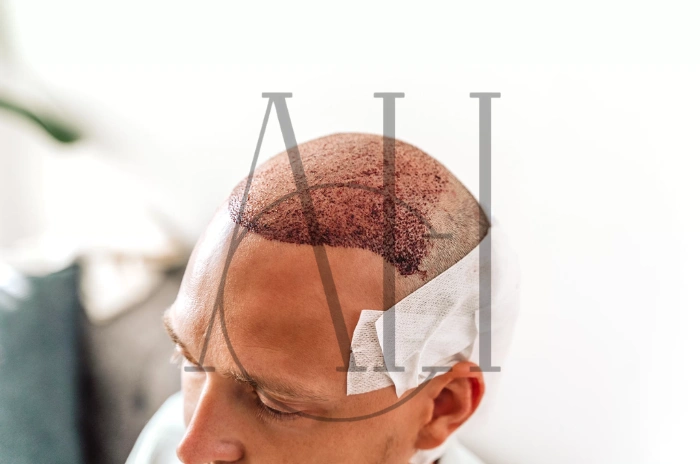Understanding how much hair grows in a year is essential for anyone planning a new hairstyle, recovering from hair damage, or simply curious about their body’s natural processes. Hair growth varies significantly among individuals, influenced by genetics, age, health, and lifestyle factors. This comprehensive guide explores the science behind hair growth, realistic expectations for annual growth, and proven strategies to optimize your hair’s potential.
Table of Contents
ToggleHow Much Hair Grows in a Year on Average
The average hair growth rate for humans is approximately 6 inches (15 centimeters) per year. This translates to roughly half an inch (1.25 centimeters) per month, or about 0.17 millimeters per day. However, this figure represents only an average, and individual growth rates can vary considerably.
Some people may experience growth rates as slow as 4 inches annually, while others with particularly favorable genetics may see up to 8 inches of growth in the same timeframe. The hair growth rate per year depends on numerous factors including ethnicity, hormonal balance, and overall health status.
It’s important to note that hair doesn’t grow continuously at this rate. The growth occurs primarily during the active growth phase, and not all hair follicles are in this phase simultaneously. At any given time, approximately 85-90% of your scalp hair is actively growing, while the remainder is in resting or shedding phases.
Understanding the Hair Growth Cycle
The hair growth cycle stages consist of four distinct phases that each hair follicle progresses through independently. Understanding these phases is crucial for comprehending why hair grows at the rate it does.
Anagen Phase (Growth Phase)
The anagen phase hair growth represents the active growing period, lasting between 2 to 7 years for scalp hair. During this phase, cells in the hair follicle divide rapidly, adding to the hair shaft. The length of your anagen phase is primarily determined by genetics and directly influences your maximum potential hair length. Approximately 85-90% of your scalp hair is in anagen phase at any given time.
Catagen Phase (Transition Phase)
The catagen phase is a brief transitional period lasting about 2-3 weeks. During this time, hair growth stops, and the follicle begins to shrink. Only about 1-2% of your hair is in this phase at any time.
Telogen Phase (Resting Phase)
The telogen phase lasts approximately 3 months, during which the hair remains in the follicle but doesn’t grow. About 10-15% of your hair is in this resting phase.
Exogen Phase (Shedding Phase)
The exogen phase can last 2-5 months, when old hair sheds from the scalp. It’s normal to lose 50-100 hairs daily during this phase as new hair begins growing in the same follicle.
What Affects How Fast Your Hair Grows
Factors affecting hair growth are numerous and interconnected, ranging from unchangeable genetic factors to modifiable lifestyle choices.
Genetics and Ethnicity
Genetics plays the primary role in determining your hair growth genetics. Your genetic makeup determines the length of your anagen phase, hair shaft thickness, and overall growth rate. Ethnicity also influences growth patterns, with Asian hair typically growing fastest at about 6.3 inches annually, followed by Caucasian hair at 6 inches, and African hair at 4 inches.
Hormonal Balance
Hormones significantly impact hair growth rates. Thyroid hormones, sex hormones, and growth hormones all influence the hair growth cycle. Hormonal imbalances from conditions like thyroid disorders, PCOS, or menopause can slow growth or cause hair loss.
Nutritional Status
Adequate nutrition is fundamental for healthy hair growth practices. Hair follicles require specific nutrients to function optimally. Deficiencies in iron, zinc, biotin, vitamin D, protein, and B-vitamins can significantly slow growth rates. A hair growth diet should include lean proteins, leafy greens, nuts, seeds, fish, and whole grains.
Health Conditions and Stress
Various health conditions can impact growth rates. Autoimmune disorders, chronic stress, severe infections, and chronic illnesses can disrupt the hair growth cycle. Chronic stress elevates cortisol levels, which can push hair follicles into the telogen phase prematurely. Quality sleep is essential for cellular repair, including hair follicle activity.
Hair Care Practices
Aggressive styling, excessive heat application, tight hairstyles, and harsh chemical treatments can damage hair and break strands before they reach their potential length. While these practices don’t affect the rate at which hair grows from the follicle, they impact apparent growth by causing breakage.
Hair Growth Rate Changes by Age
Age and genetics affect hair growth rate significantly throughout different life stages. Understanding these changes helps set realistic expectations.
Childhood and Adolescence
Hair grows fastest during childhood and adolescence, when growth hormones are at peak levels. During these years, the anagen phase tends to be longest, and follicles are most active. Many people experience their best hair growth rates between ages 15 and 30.
Young Adulthood (20s-30s)
During young adulthood, hair growth rates remain optimal for most people. The hair growth cycle functions efficiently, and follicles are highly responsive to proper nutrition and care.
Middle Age (40s-50s)
As we enter middle age, hair growth gradually slows. The anagen phase shortens, and more follicles spend time in resting phases. Hormonal changes, particularly during menopause in women, can significantly impact growth rates.
Older Adulthood (60+)
In older adults, hair growth rates typically decrease further. Hair may grow only 4-5 inches annually compared to the 6-inch average in younger adults. However, maintaining good health and nutrition can help preserve better growth rates into older age.

Ways to Make Hair Grow Faster
While you cannot dramatically exceed your genetic potential, you can optimize conditions to achieve your maximum how to make hair grow faster potential.
Scalp Care and Massage
Regular scalp massage for hair growth increases blood circulation to hair follicles, potentially supporting nutrient delivery. Studies suggest that daily 4-minute scalp massages may improve hair thickness. Use gentle circular motions with fingertips across the entire scalp. Consider incorporating scalp exfoliation weekly to remove product buildup.
Nutritional Supplementation
Hair growth vitamins can support growth when dietary intake is insufficient. Key supplements include biotin, iron, vitamin D, omega-3 fatty acids, and marine collagen. Always consult a healthcare provider before starting supplements.
Protective Styling
Minimize mechanical damage by avoiding tight hairstyles that create tension on hair follicles. Use silk or satin pillowcases to reduce friction during sleep. Limit heat styling and always use heat protectant products. Trim split ends every 8-12 weeks to prevent splits from traveling up the hair shaft.
Medical Treatments
For those experiencing significant hair thinning, medical interventions may help. Minoxidil is FDA-approved for promoting hair growth. Low-level laser therapy and platelet-rich plasma injections show promise in clinical studies. Consult with a dermatologist to determine if medical treatments are appropriate.
Healthy Habits for Better Hair Growth
Establishing consistent healthy hair growth habits creates the foundation for optimal growth.
Balanced Diet Rich in Protein
Hair is composed primarily of keratin, a protein structure. Consuming adequate protein provides the building blocks necessary for hair growth. Include lean meats, fish, eggs, legumes, and dairy products in your hair care for faster growth diet. Incorporate foods rich in omega-3 fatty acids like salmon and walnuts.
Regular Exercise
Physical activity improves circulation throughout the body, including to the scalp. Exercise also helps manage stress hormones and supports hormonal balance. Aim for at least 150 minutes of moderate-intensity exercise weekly.
Gentle Hair Washing Routine
Wash hair 2-3 times weekly for most hair types. Use lukewarm water rather than hot, which can strip natural oils. Apply shampoo primarily to the scalp and conditioner to mid-lengths and ends. Choose sulfate-free, gentle cleansers.
Avoid Harmful Habits
Smoking restricts blood flow to hair follicles and introduces toxins that can damage cellular processes. Excessive alcohol consumption can interfere with nutrient absorption. Both habits are associated with hair loss causes and slower growth rates.
Consistent Sleep Schedule
Maintain a regular sleep schedule with 7-9 hours of quality sleep nightly. Create a sleep-conducive environment that’s dark, quiet, and cool. Quality sleep supports the hormonal balance necessary for optimal hair growth.
How Much Does Hair Grow in a Year: FAQ
How many inches does your hair grow annually?
On average, human hair grows approximately 6 inches per year, though individual rates vary between 4 to 8 inches based on genetics, age, and health factors.
What are the four phases of the hair growth cycle?
The four phases are anagen (active growth lasting 2-7 years), catagen (transition lasting 2-3 weeks), telogen (resting lasting 3 months), and exogen (shedding lasting 2-5 months).
Can lifestyle habits genuinely make hair grow faster?
Lifestyle habits cannot exceed genetic potential but can optimize growth rates by supporting follicle health through proper nutrition, stress management, adequate sleep, and gentle hair care practices.
Do age and genetics affect hair growth rate?
Yes, genetics determines your baseline growth rate and anagen phase length, while age influences growth speed, with rates typically peaking in youth and gradually declining after age 40.



